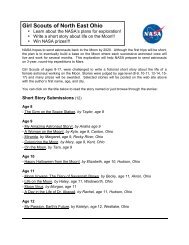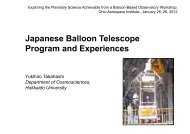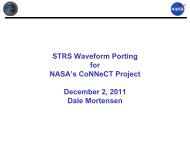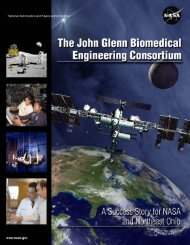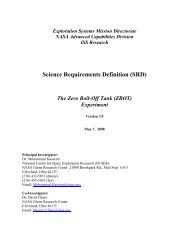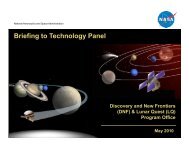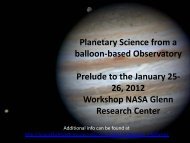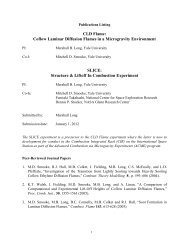Amusement Park Physics With a NASA Twist - Space Flight Systems ...
Amusement Park Physics With a NASA Twist - Space Flight Systems ...
Amusement Park Physics With a NASA Twist - Space Flight Systems ...
Create successful ePaper yourself
Turn your PDF publications into a flip-book with our unique Google optimized e-Paper software.
Free-Fall Rides—Nonattending Students<br />
Ride Measurements<br />
When measuring the end of the fall, make sure that you<br />
measure the g’s before the ride bends away from the vertical.<br />
Always hold the accelerometer so that it is vertical, or the<br />
measurements will not be correct.<br />
1.<br />
If you were to take the accelerometer on the ride to<br />
measure the accelerations (g’s) during the ride, where<br />
would you experience various g levels<br />
2.<br />
Complete column g in the data table below.<br />
3.<br />
Indicate with an “X” which of the four locations below have<br />
a maximum kinetic energy (KE), maximum potential<br />
energy (PE), minimum KE, or minimum PE. There should<br />
be only one X in each column. That is, there is only one<br />
location (either during the lift, at the top of the ride, during<br />
the fall, or the end of the fall) in which there is a maximum<br />
KE. Remember, KE is energy of motion and PE is energy<br />
of position.<br />
During the lift<br />
At the top of the ride<br />
During the fall<br />
End of the fall<br />
g Maximum KE Maximum PE Minimum KE Minimum PE<br />
87<br />
<strong>Amusement</strong> <strong>Park</strong> <strong>Physics</strong> <strong>With</strong> a <strong>NASA</strong> <strong>Twist</strong><br />
EG–2003–03–010–GRC



